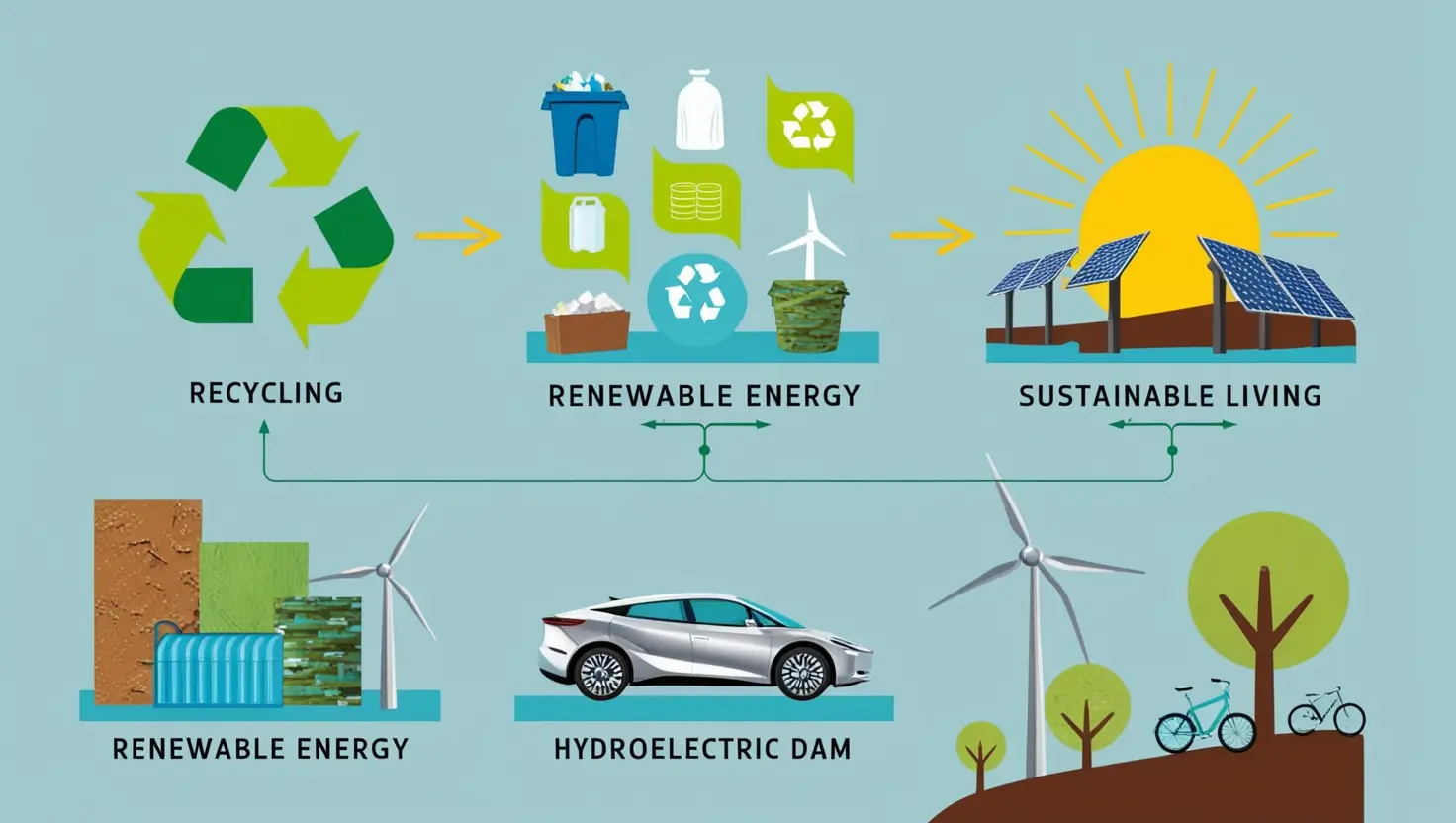What is sustainable living? It is a living style which aims to minimize the negative impact of an individual or a society on the environment.
In this article, we aim to discover the fundamental concepts of how to be sustainable in the aspects of home living and provide tips for households on possible ways of limiting wastage of both energy and other resources. Become one of the members of the community as for the creation of a sustainable future!
What is Sustainable Living and Why is it so Critical?
First of all it is necessary to clarify what is understood by the term ‘sustainable living.
Sustainable living describes a way of life in which one aims at making the least impact on the natural world in his or her everyday activities. It promotes moderation and sustainable use of available resources since the inhabitants do not take strict control on the available natural resources such as water, electricity, food, and others.
In broad term it means to satisfy the wants and requirements of the current generation in a way that does not compromise with the ability of the future generations to fulfill their wants and requirements.
For what reason should sustainable living be a key concern?
Eco friendly is therefore important as it reduces the effects of adverse effects on the environment by ensuring it is habitable by future generations.
At present, global climate change, exhaustion of natural resources, extinctions of species and high carbon footprints threaten the environment and the entire planet.
These are some of the challenges sustainable living seek to solve. Not only is it useful in preserving the environment but it will also be useful to any individual as well as the economy. It saves money, strengthens people’s well-being and creates a foundation for a healthier and more beautiful world.
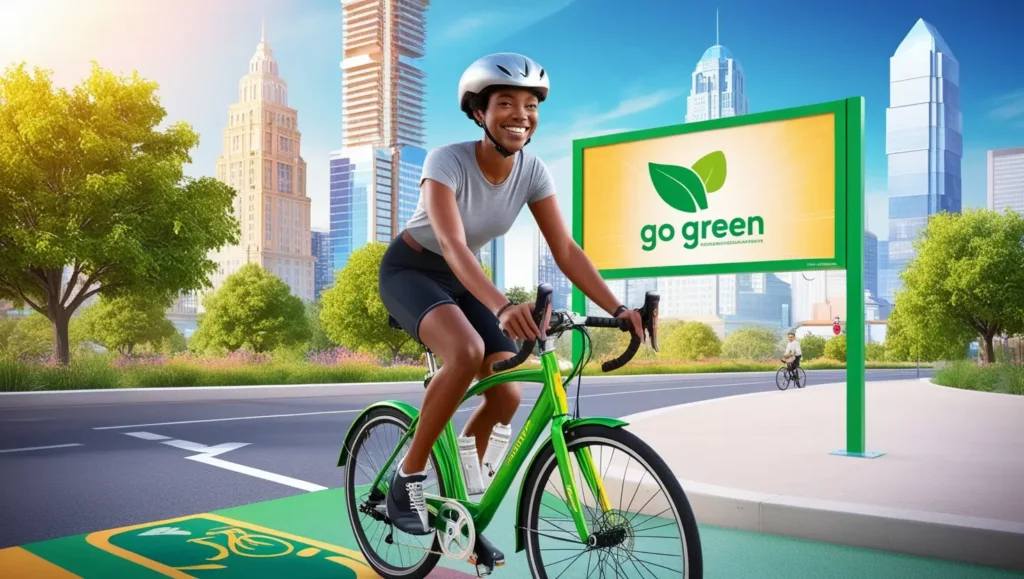
The following are some of the environmental issues that affect the globe today and the importance of sustainable living.
Some of the major global environmental issues include: Some of the major global environmental issues include:
- – Climate Change: Climate change is aggravated by global warming due to increase in the levels of greenhouse gases in the atmosphere.
- – Depletion of Natural Resources: The utilizado of fossil fuels, water, forests, and other natural resources in large amounts and within a short span of time.
- – Pollution: It includes water and habitual air pollution coupled with soil deterioration which will impacts the human being and also the ecosystem.
- – Loss of Biodiversity: These include; elimination of forests, destruction of homes and living spaces for animals, depletion of species of animals and plants and others.
There is no doubt sustainable living is important here in order to deal with these problems. It helps us:
- – Decrease the generation and use of carbon materials (for instance through energy from natural resources and environmentally-friendly means of transport).
- – This includes the promotion of recycling and take back programs which finally results in the saving of wastes and resources.
- – Use the resources found in nature as required without wastage and do not spend on unnecessary things.
- – The second is, be an active participant in preservation and protection of the environment in order to enhance biodiversity.
Therefore, sustainable living can be categorized as the systematic strategy of time-bound preservation of ecosystems, economy and human society.
Principles of Sustainable Living
Sustainability is defined as the preservation of the natural resources and the environment through application of practices and measures that have been developed to meet the need of the society.
By adhering to the above principles to the letter then the general public can learn how to protect the environment for future generations. Below are some key principles of sustainable living: Below are some key principles of sustainable living:
Efficient Use of Resources
As you recall, the escalating depletion of the earth’s resources forms one of the greatest commandments of sustainability. As natural resources like water, electricity and gas as well as food are finite conservation of the resources is paramount. Some strategies include:
– Water Conservation: Be keen in studying how water is used in daily processes and try to minimize on that usage use water that is harvested from the rainy season.
– Energy Usage: Consume ‘Electricity and other fuels’ in a more rational manner. For example, not leaving lights on when the occupants of a room are not present or switching off any electrical appliances when not in use.
– Preventing Food Waste: Eat only what is required at once and attempt to prepare more food just to be reheated later in order to reduce wastage.
Recycling and Reusing Practices
As a result, time has come when recycling and reusing should be considered as basic principles of sustainable living. In this way, it is possible to minimize daily waste and decrease utilization of valuable resources for manufacturing and creating a new product.
– Seeking Alternatives to Plastic and Recycling: Recycle and avoid plastic products as much as possible and replace them with paper, fabric or metal products.
– Composting: Recycle the organic wastes, for example scraps of food, into compost and use the resultant compost as fertilizers.
– Electronic Recycling: This is by recycling or properly disposing off the old electrical items if not in an eco friendly manner.
Reducing Carbon Footprint
Carbon foot printing may be defined as carbon dioxide emissions connected with the utilization of fossil fuel, electricity and transportation in our lives. A principle of the sustainable living is the reduction of these carbon emissions.
– Using Eco-friendly Transportation: Cycling, using public transportation or electric cars, trucks, and busses help to cut on emissions.
– Energy-efficient Appliances: Ensure that you use house hold appliances that use less electricity and preferably use LED bulbs.
– Buying Local Food: This will involve using locally produced food items instead of imported food products; this is due to the fact that transportation consumes fuel.
Using Renewable Energy (Solar, Wind)
Renewable resources are those which are freely available and are not very harmful to the environment. Reducing the use of energy is an important way of living since it enables the conserved energy to be harnessed naturally.
– Solar Energy: People should adopt the use of solar power thus they should set solar panels at home to produce electricity.
– Wind Energy: Where possible tap wind power for electricity generation.
– Hydroelectric Power: Hydro electricity power can also be produced from small scale hydro electric power plant.
Thus, adhering to these principles, not only, does the company safeguard natural resources but also embodies an environmentally friendly attitude to the utilization of natural resources in the longer run.
Applying the principles of reflection on sustainable living practices in one’s lifestyle translates to cutting on carbon emission and the preservation of the earth’s ecosystems.
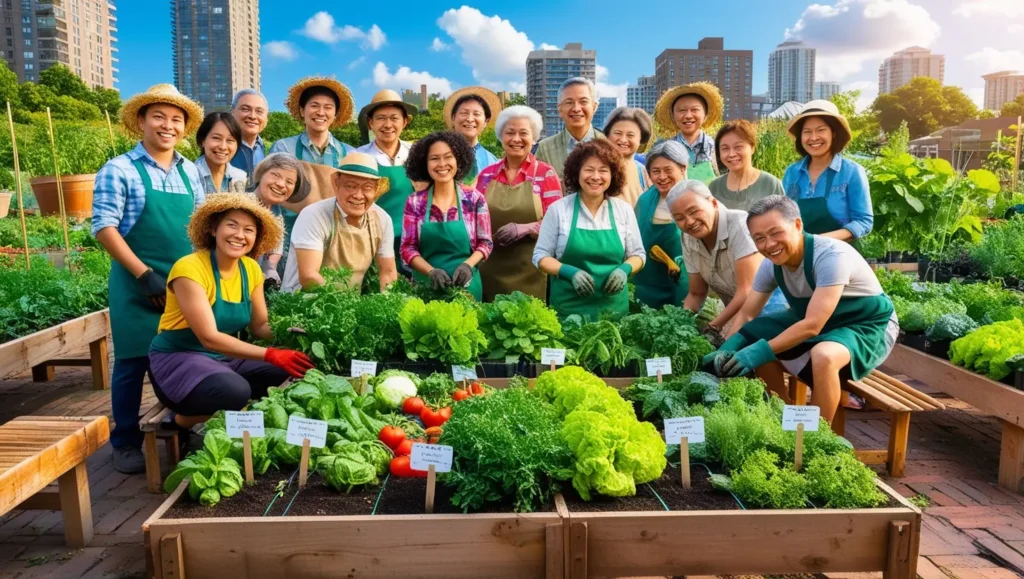
The Contemplation of Sustainable Practices on Daily Basis
It is not a theory nor a holiday, but is a change in people’s attitudes that can help them to improve the state of the world every day. Here are some sustainable practices that can be easily implemented: Here are some sustainable practices that can be easily implemented:
Sustainable Fashion: Less Pollution, More Durability
Eco-chic or post consumerism fashion is an approach to fashion that is cost effective and has the least negative effect on the environment and mostly involves the reuse of clothes. Some strategies include:
– Choosing Long-lasting Clothes Over Fast Fashion: Choose natural materials which will last long, they include; cotton, Linen or hemp. .
– Buying Second-hand Clothing: Instead of wearing new clothes, wear second-hand or second hand clothes since it contributes little to carbon emissions by the fashion industry.
– Eco-friendly Brands: Buy apparels from brands that are environment conscious or those which focused on using environmental friendly fabrics and techniques such as fair trade.
– Reuse and Repair: To minimize waste in the fashion industry do not throw away any clothes, instead, repair or wear them again.
Sustainable Eating Habits: Organic and Local Food
Maintaining self control of maintaining a healthy diet is very important in improving the general health of an individual It’s evidenced by the fact that irresponsible consumption of food has a very bad impact to the environment. Some strategies include:
– Organic Food: Buy foods grown in organic farming methods without use of pesticide and chemical fertilizers since they are healthier and friendly to the environment.
– Local Food: Support locally grown foods to be consumed as an opponent to importing food from other areas resulting in high costs for the transportation processes.
– Seasonal Fruits and Vegetables: Consume vegetables and fruits from the same area as they are ecological since they take less effort to be cultivated locally.
– Plant-based Diet: Include plant-based foods such as beans, soy or any nuts since their production does not produce the same effect as livestock animal farming.
Alternatives to Plastic and Other Harmful Materials
Polymers used in plastic and other one-time items are some of the most anti-ecological materials around. It therefore become important to come up with ways of using alternatives in our daily lives.
– Cloth Bags Instead of Plastic Bags: Purchase soft/ reusable cloth bags instead of the plastic bags that are bad for the environment.
– Stainless Steel or Glass Bottles: Switch from using plastic bottles to steel or glass ones so that they can be reused instead of being disposed of after sometime.
– Bamboo or Wooden Products: It is advisable to use such products from bamboo, wood or other natural materials which can be recycled easily.
– Plastic-free Toothbrushes: choose a bamboo toothbrush instead of plastic one.
Tips for Buying and Using Eco-friendly Products
People should know that they can select the green products as one of the ways of living sustainably with ease. Some important tips include:
– Buy Only What You Need: It is better to avoid purchasing non important things and to use things carefully in order not to throw them away.
– Eco-friendly Packaging: Select items which contain recyclable or no-plastic materials on their packaging.
– Biodegradable Products: Purchases should be made on items that are packaging that is also made from bio-degradable materials that can easily degrade and don’t have any negative impacts on the surrounding environment.
– Reusable Products: Choose the reusable containers and cups and avoid using single-use ones.
Thus changing our day to day life habits and implementing these practices will go a long way in reducing our negative impact to the environment. These actions will assist in the conservation of the earth making it a better place to live for future generations.
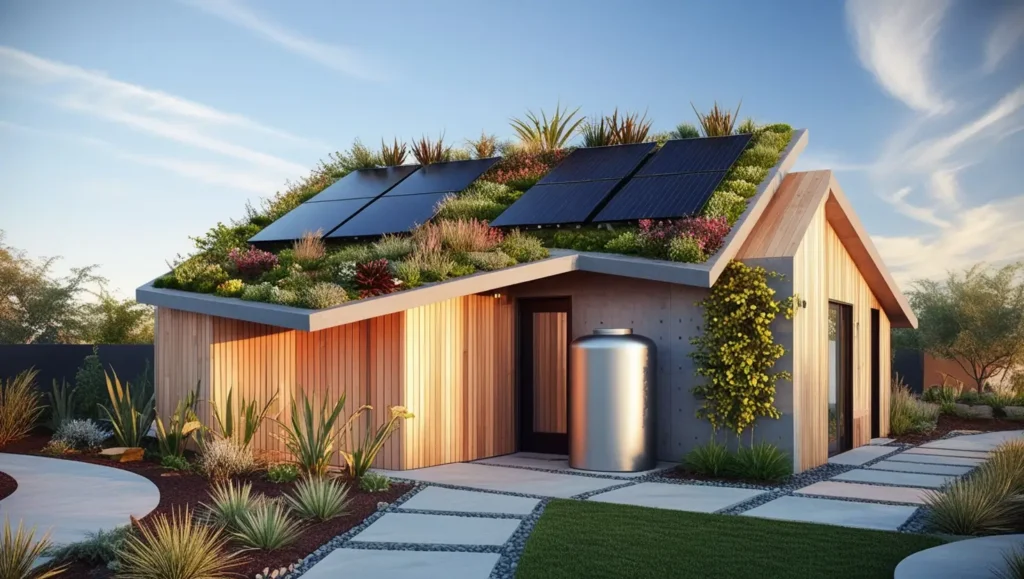
Water and Electricity Conservation
Everyone uses water and electricity in his/her everyday life which if used carelessly will affect both the environment and the economy. Balancing has been identified with great relevance in ones sustainable lifestyle and this includes the conservation of water and electricity. Here are some ways you can apply conservation methods in daily life: Here are some ways you can apply conservation methods in daily life:
Ways to Prevent Water Waste in Daily Activities
We know water waste is an issue and if we minimized the waste then we would be solving the problem of scarcity of water and at the same time would be saving more of what nature has provided us. Some effective strategies include:
– Fixing Small Leaks: Fix any leakage in homes or offices at a very fast pace and effectively.
– Using Water-efficient Taps: There should be utilize of sensors or in other cases low flow taps and shower heads in order to regulate the flow of water and usage.
– Shorter Showers: Instead of the usual long baths one should take short baths in order to minimize the use of water.
– Washing Without Wasting Water: Also, turn off the tap while washing cars, dishes or clothes using a bucket of water or a wet cloth.
– Turning Off the Tap While Brushing: Do not let the tap run while brushing your teeth.
Using Energy-efficient Appliances
This increases energy consumption and thus the use of energy efficient appliances will help to save energy. It also reduces greenhouse gas emissions while it offers great potential for the integration of distributed renewable electricity sources. Some tips include:
– Energy-saving Lights (LEDs): In their place, you should install LED types of lights as they are more efficient in their use of electricity and technically durable as opposed to the traditional bulbs.
– Energy-efficient Electronics: Select energy-efficient devices such those used in refrigeration, washing clothes, and cooling including air conditioners with the energy star logo since they utilize less energy.
– Turn Off Appliances After Use: The television set, fan or light bulbs should be turned off once they are not required and the plugs pulled off the wall sockets because devices in standby mode also consume electricity.
– Electric Cooking Devices: Employ utensils which are energy efficient and include a pressure cooker or an induction cooker.
Installing Rainwater Harvesting Systems at Home
Rain water harvesting is the most natural process of collection of rain water for one use or the other. It decreases water shortage and supports the preservation of water reserves in the form of groundwater. Some key methods include:
– Rainwater Collection Tanks: Fix a rain water storage systems at roof or any available area to store rain water which may be useful in future.
– Filtering System: Introduce a conditioning system to purify the collected rainwater so that it may be used by the users directly.
– Using for Irrigation and Household Tasks: It can be used to water plants in the garden, wash clothes, flush toilets and for other chores in the households.
– Recharging Groundwater: Rainwater can also help in filling up the ground water levels because the water you have collected could be channeled into the surrounding soil of your house.
These measures if adopted and incorporated into the society lifestyle will go a long way in the reduction of water and electric consumption. This is not only a necessity in the preservation of the environment but it is also efficient from the aspect of money and gradual construction of a sustainable future for life.

Sustainable Transportation Systems
A sustainable transportation system is the one that is environmentally friendly and which has little or no effect on the environment in a negative way. It helps to minimize the emission of carbon all around the globe and also helps to save cost. Therefore, through the adoption of sustainable transportation, one is able to protect the environment while at the same time gain from the economic point of view.
Using Bicycles, Public Transport, and Electric Vehicles
Reducing personal transport emissions is a possibility when we incorporate proper environmentally friendly means of transport. Here are some sustainable transportation methods: Here are some sustainable transportation methods:
– Bicycle Use:
Bicycles are completely eco-friendly. It gives off no carbon emissions and it is also good for the health. Basically in regard to the mobility within the cities for short distances, bicycles serve as the best solutions.
– Benefits:
– No fuel costs.
– Promotes provision of exercise, which enhances the physical health of the body.
– Helps in minimizing traffic jam if bicycle lanes are reserved for the users.
– Public Transport:
This means buses, trains, metro and trams as mode of transport can greatly help in the reduction of carbon emission. Less traffic is also having low fuel utilization and less polluting of the environment.
– Benefits:
– Carbon emission is much less than the private vehicles since more passengers can accommodate in a single bus.
– Affordable and enables one to achieve required time of being at certain places.
– Reduces traffic jam on the roads as well as polluting the environment.
– Electric Vehicles (EVs):
The vehicles under electric power are able to regenerate electricity which eliminates the use of fossil energy. The examples of such green means of transport include electric cars, scooters, as well as electric buses.
– Benefits:
– Thus, you will agree that there are almost zero incidents of carbon emissions from this source.
– Reduced fuel bills in accordance to the specific bargain of the longevity of the materials used.
– Thus, it can become even more sustainable with future renewable energy charging options such as in remote solar power.
Benefits of Carpooling or Sharing Systems
Carpooling or sharing generally entail the use of a single vehicle through conveyance of different persons. This cuts down the use of physically owned cars and thus the side effects are environmental friendly.
– Carpooling:
When many people use one car specifically for going to work in the morning it means that there will be little use of fuel and congestion. For instance, people who work together or live in the same housing estate can opt to use one car in going to work or running errands, a practice that saves the environment and one’s pocket.
– Benefits:
– Reduces transportation costs through sharing of vehicles hence instancing low fuel consumption and carbon emissions.
– This means that the people travelling in the trains will not be involved in such traffic congestions that contribute to high rates of road pollution.
– Expenses incurred during the course of using the vehicle that has to be split between the parties.
– Ride-sharing Apps:
Current forms of ride hailing in services such as Uber and Lyft have provisions for pools in which several people get into the same car for the same or similar destinations.
– Benefits:
– Especially useful when one has to travel at short notice or have to travel frequently.
– It is environment friendly and can also be considered as cost effective as well.
– Bike-sharing:
There are many cities today that have bike sharing services which means that subscribers can use the bikes for a given duration and drop them at stations.
– Benefits:
– Fast, traffic-free commuting.
– Again there is no concern of having bikes for transport or the stress of having to maintenance or store the same.
It is important that people travel in an environmental-friendly manner and some of the most preferred means include cycling, taking public transport and using electrical cars.
Also, in the usage of carpooling or sharing systems we can enhance the process of being eco-friendly. It is through these methods that it was possible to find ways of actively addressing carbon emission while embracing principles of environmental conservation.

Sustainable Building and Architecture
Sustainable building and architecture is related to building construction that is environmentally friendly and was put into practice taking time, energy and conservation into consideration.
This method is applied in reducing the impact that construction makes to the environment, while at the same time providing comfortable, habitable and sustainable spaces to coming generations.
Green Building Design and Strategies
Sustainable buildings are those that have little or no impacts on the environment and utilize natural resource fully. Some key design strategies for green buildings include: Some key design strategies for green buildings include:
– Passive Solar Design: This include control of the sun and heat in the construction of building. This offers the possibility of natural lighting and the control of temperature of the room.
This means that by orienting roofs or windows of buildings correctly or incorrectly depending with what is required, then agencies for example heat can be harnessed or avoided depending on what is required.
– Ventilation and Airflow: Large windows, roof ventilators and airflow pathways can be provided as an integral part of the building which makes the interior well ventilated so the use of air conditioning equipment is minimal.
– Green Roofs or Rooftop Gardens: Use of planted vegetation on the rooftop assists in reducing building temperature also in the conservation of rain water. The green roofs also discharging air purification besides heat absorption.
– Water Conservation Techniques: They reduce wastage of water by achieving rainwater, grey water and practice stringent policies in the use of low flow taps and showering facilities.
Energy-efficient Home Design and Construction
Eco homes are constructed with a view of using least energy and at the same time utilizing the natural resources effectively. Some key techniques include:
– High-quality Insulation: Insulating material like the walls, roofs and glass windows they play a big role in controlling the internal temperature of the houses by ensuring they are well warmed in the cold season and cooled in a hot season.
– High-performance Windows: The use of double-glazed or Low-E windows directors incoming air and the amount of heat from outside to be let in while in the same manner, leading heat or cold from entering the house thereby decreasing usage of heating or cooling appliances.
– Solar Power: It is advantageous to install solar panel in the roof of the house since this helps in producing renewable electricity thus saving electricity and costs.
– LED Lights and Energy-saving Appliances: Switching to energy efficient led lights and using energy star certified appliances cuts the electricity usage and the resultant emissions.
Use of Eco-friendly Materials
Eco-friendly materials are very essential in construction of sustainable buildings. Recyclable, long lasting, high utility, environmental friendly and have less carbon emissions than metals and plastics. Examples include:
– Recyclable and Locally Sourced Materials: The examples include construction of buildings from locally available resources like bamboos and mud bricks that would reduce on transportation and hence saving the environment.
– Recycled Wood and Steel: The technique of utilizing recycled wood, steel and concrete helps to cut down construction waste and the utilization of raw materials.
– Low VOC (Volatile Organic Compounds) Materials: Employing low-VOC-content paints, coatings, and building materials let out of indoor air pollutants and contribute to healthier living conditions.
– Bamboo and Cork: The more the raw materials used, the higher the pressure exerted on the environment and hence, scrupulous materials such as bamboo and cork that has a short growth cycle should be used and they are perfect for construction work.
Greening of building and architecture is beneficial in the aspect of environmentally conscious construction while being cost effective in the long-run. We need to make use of green building designs, energy efficient homes and eco-friendly building materials to positively impact on the environment to enhance sustainability and livability.
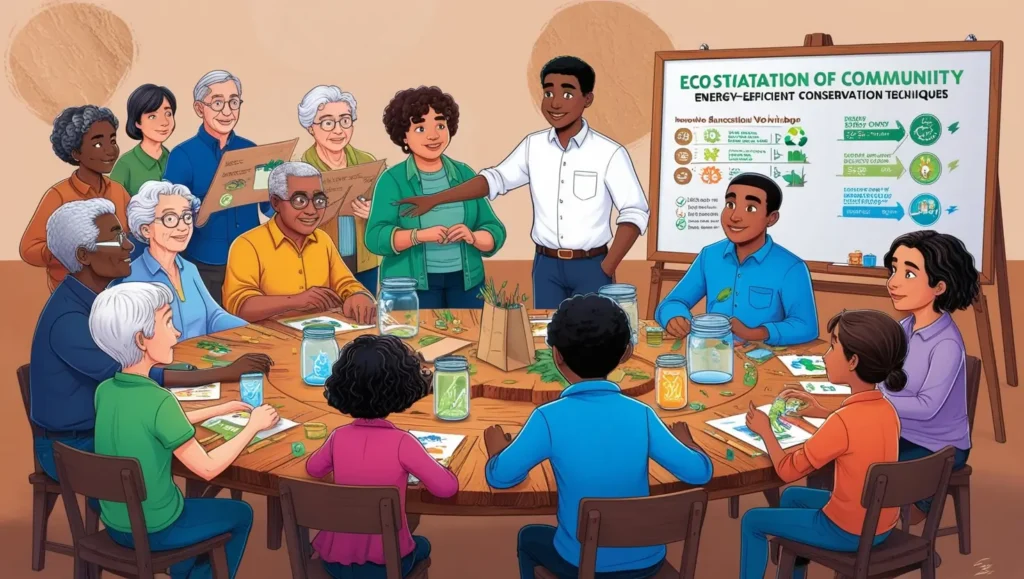
Waste Management and Recycling
Sanitation and proper disposal of waste are the fundamental requirements of the community as well as environmental preservation. It also has a positive impact in avoiding wastage of natural resources through reuse as well as recycling of the products. A sustainable lifestyle can be achieved through recycling materials, composting, and the employment of the zero-waste policy.
Recycling and Composting Methods
Recycling and composting are important elements of proper waste management since they give the opportunity to use the natural resources as long as possible and minimize the waste.
Recycling: Recycling is the re-use of material whereby used products or items are collected and remanufactured into new products. It helps in proper utilization of the natural resources and also there will be less wastage that goes to the dump sites.
– Materials for Recycling: Newspaper, milk cartons, aluminum foils, bottles, and cellular phones and other gadgets are examples of items that could be recycled in order to form new products.
– Process: Collection of waste ensure that they are separated where recyclable ones are picked up and then turned into products.
– Examples: Soft pack drinks bottles, news paper, metals and electrical parts can be reused to manufacture new materials.
Composting: Composting is the organic way where food wastes, fruits skin and even leaves are allowed to disintegrate and change into compost. This compost may be used to make the soil fertile.
– Materials for Composting: Predominantly, plant leaves, grass, tea leaves and other similar items, fruit and vegetable peels, food scraps, etc.
– Process: Solid waste which has originated from natural processes is deposited in a particular bin or well whereby it degrades to become manure that furbishes the soil.
– Benefits: It successfully minimizes waste products that are disposed to the landfills and produce natural fertilizer for the soil.
Zero Waste Concept and its Practices
The zero wastage notion is a practice that tries to address the generation of wastes in communities by defining them as unnecessary entities by utilizing more of recyclable and reusable and minimizing the generation of products.
– Reduce: Avoid buying unnecessary items and or materials by implementing proper buying procedures. For instance replace the use of plastic bottles or bags with the reusable bottles or bags made from cloth material.
– Reuse: Promote the conservation of the product by extending the uses of items such as old clothes, furniture or containers for other uses.
– Recycle: Gather and sort aluminum, paper and other items to make products of equal value.
– Rot: Collect and mix organic waste then turn the mixture into natural fertilizers through composting.
– Refuse: Do not use products that are injurious to the environment such as plastic products that are used once before being disposed of.
Electronic Waste and Sustainable Electronic Products
E-waste is defined as discarded or-end-of-life mobile phones, computers, TVs and other household appliances. When e-waste is not properly managed, it means that toxic substances such as heavy metals will be released in to the environment.
E-waste Management:
– E-waste Recycling: Electronic products give metals and materials of considerable value which are then recycled and reused. This minimizes the exploitation of the natural resources in the manufacturing of the new electronic gadgets.
– Special Recycling Centers: Electronic waste should then be delivered to other centers for proper recycling as well as disposal.
Sustainable Electronics:
– Durable and Energy-efficient Products: Purchase electronic appliances that are durable, effective and meet energy star approved product specifications.
– Repair and Upgrade: Rather than conveniently disposing of spoilt electronics, repair or renew them for the purpose of serving longer.
Waste management and recycling mechanisms have potential to come up with social pressure away from environmental sources so that no strain in the utilization of Natural resources.
Through reduction of the wastes in our day to day lives, utilization of compost, proper disposal of e-waste and choosing to use environmentally friendly electronics, we shall be able to work towards creating sustainable living.
Sustainable Investment and Economy
Sustainable investment and economy concerns the notion of economic science, concerning the use of business and investment impact for the creation of sustainable values in the environment, society and economy. It puts into consideration environment and social issues and not just the returns which are very important especially in the future.
Sustainable Business and Social Responsibility
A sustainable business means that an organization accepts limited profitability and does not negatively affect the environment while being profitable in the long term for society and the environment.
– Corporate Social Responsibility (CSR):- Corporate Social Responsibility (CSR):
Corporate Social Responsibility is a business policy that entails undertaking activities that are of appropriateness to the society and the environment of the company. In this policy, firms respond to social concerns, be socially responsible to the environment and take care of their staff.
– Example: Companies act to decrease the carbon footprint, ensure health safety of its employees, and have a positive impact on the society and the local population.
– Characteristics of Sustainable Businesses:- Characteristics of Sustainable Businesses:
– Environmentally friendly production: This ensures that firms utilize least energy and the products are made from environmentally friendly materials.
– Fair wages and a safe work environment: Promoting efficiency to guarantee fairness of employees’ wages and safe working conditions.
– Long-term goals: Managers do not only seek to maximize the enterprise’s profitability but also strive to achieve the sustainability of the natural ecosystem and social system.
Green Financing and Sustainable Investment
Green financing and sustainable investment therefore refers to investment activities that are conducted in order to promote the conservation of the environment, social welfare and the creation of sustainable economy.
– Green Financing:
Green financing is a business activity that provides financing to green projects with the aim of making it sustainable. These projects focus on renewable energy, waste management, water conversation and the advancement of environment friendly technology.
– Example: Holding stocks, bonds or equities in the arena of solar electrical system, the production of wind energy and developing hydroelectric power.
– Green Bonds: Sustainable bonds are subcategories of bonds, which finance environmentally friendly projects specifically green bonds are subcategories of debt. This enables the investors to source for capital to engage in environmental friendly projects.
– Sustainable Investment:
Sustainable investment, therefore, is an investment that aims at a profit in addition to working for the improvement of the environment all flesh. It stresses on environmental preservation, employment opportunities and social welfare.
– ESG Investment (Environmental, Social, and Governance):- ESG Investment (Environmental, Social, and Governance):
ESG stands for environmental, social and governance components that make up a model of investment. By this, investors put their capital in projects for the benefits of the environment, society as well as good governance.
– Example: Taking interest in funding renewable energy, environmental technologies and education as well as health sectors.
– Social Impact Investment:
This makes it possible for investors to finance work, which will have a positive impact on the society in areas such as; economic growth in the rural areas, delivery of health services and provision of education.
– Long-term Profit: Sustainable investments might have relatively poor returns than unsustainable investments, but are believed to yield more income and thus are more secure in the long run.
Sustainable investments and economy focus on the utilization of the economic resources promoting an environmentally sound and socially effective manner. It is possible to create healthy, environment-friendly and long-lasting economic profitability for the present and even more for the future through sustainable businesses, green finance and sustainable investment.
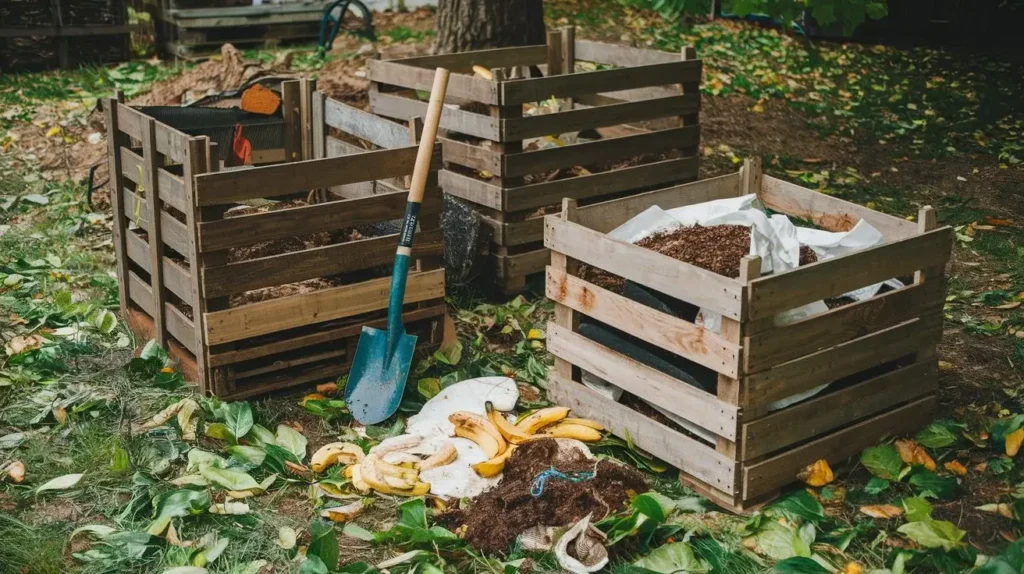
The concept of sustainable living attitude and its implication to the society
Therefore sustainable living is not just checking the environmental actions; it entails altering the social brain and behavioral patterns of the people. For this kind of perception to develop, personal alteration has to happen and extend up to the communal level. Therefore, it can be concluded that with the correct approach to one’s mindset and the overall social desires, it is possible to construct a sustainable society.
Ways to Develop a Sustainable Mindset
Sustainable living defines how an individual thinks and acts in his or her everyday life. It must be noted that creating sustainable mindset calling for sustainable change is about alertness and long-term perspective.
– Increase Environmental Awareness: Learn how all the activities that take place influence the environment. Be introduced to how resources have to be utilized appropriately so that wastage is not encouraged.
– Example: Water and energy conservation, reduction of plastic use, and recycling.
– Long-term Perspective: As much as possible, think long-term to the extent possible with no solipsistic considering of benefits that can be gotten in short order of time. One should also take into account the possible consequences of actions chosen for the further perfecting of one’s way of life.
– Example: Purchasing reusable products, procuring materials which are energy efficient.
– Education and Awareness Programs: Spread awareness to people of all ages especially in schools, colleges, offices and through social media. Basically, if the appropriate educational interventions are in place then the concern people will become more responsible to the environment.
– Sustainable Spending Habits: While purchasing the products think in terms of cost but also look on the quality of the products and if they are environmental friendly, long lasting, and if they will not contribute to the pollution of the environment.
Community-Level Sustainable Practices
Besides personal sustainable behaviors, there is also the aspect of the community. Thus, it is possible to assert that community approaches will allow for making large-scale changes.
– Community Gardens: Creation of portable community gardens in urban or rural regions to enable everyone engage in production of organically grown crops. It also promotes healthy food and enhances social interactions among the people in the society.
– Community Initiatives for Water and Energy Conservation: Measures taken in regards to water-saving, rain water harvesting and the utilization of renewable energy can be put in to practice at the community level for the benefit of individual and society as a whole.
– Reusable Item Exchange: Efforts that embrace sharing or reuse of products or furniture within the society will go along way in mitigating the problem. This is good because it leads to reduction of costs and also cutting down of wastes.
– Community Environmental Awareness Programs: Educations is needed to be launched on member’s duties towards environment to ensure a change starts to transform into acceptable status.
The Role of Social Movements and Initiatives
With regards to large-scale changes, social movements and different initiatives are very important for increasing people’s awareness and encouraging more sustainable lifestyles.
– Social Movements: Therefore, use of social movements will help create awareness to individuals on the need to undertake sustainable living and also ensure that they do it properly. Some of the movements are climate change, afforestation, and movements to reduce pollution caused by plastics.
– Example: Young people together are discovering that the climate change is a real threat, groups like Fridays for Future, Extinction Rebellion, School Strike for Climate.
– Sustainable Initiatives: Sustainable projects are carried out by the different non-governmental organizations and social bodies for the development of sustainable living in the society.
– Example: People need to be conscious of reducing carbon footprint and there organizations duty work on recycling; finding substitutes for plastics; encouraging renewable energy; and discovering aspects of green technologies.
– The Role of Government and Businesses: The governments and businesses have to be an active part of the change by integrating sustainability into their policies and projects.
– Example: Recycling and environmental friendly polices, tax credits on reusable resources, and grants for research of environmental consciousness in production and creations.
Sustainability and its dynamics when it comes to social life are found to be interrelated with the general attitude to life.
If we foster a sustainable outlook, if everyone adopts ideas and conducts that are sustainable within his or her community, if every society takes part in something that is social then we are on our way to creating a sustainable society that could be useful in helping to conserve the natural resources in the society so that there is balance within the environment.
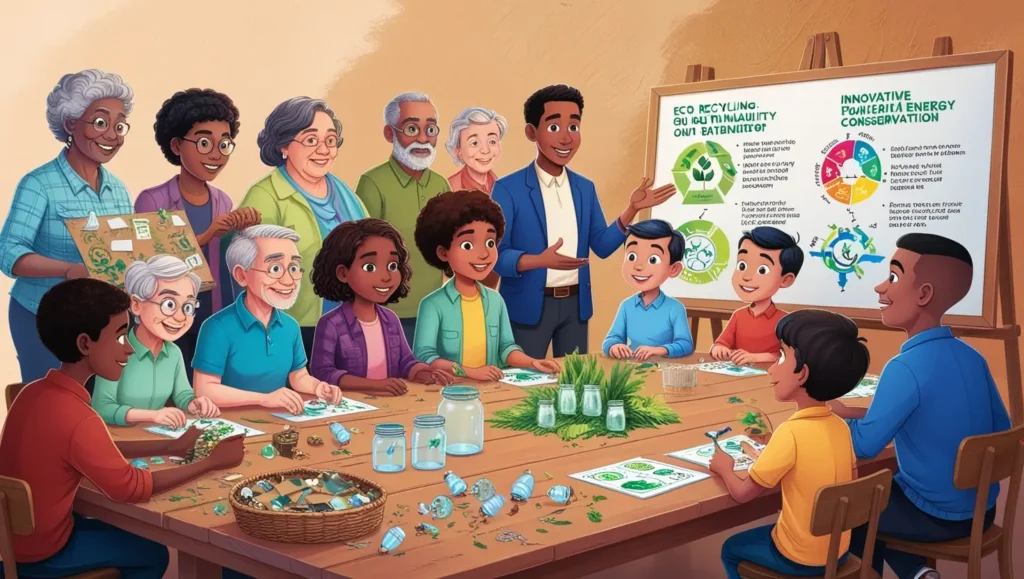
Sustainable Technology and Innovation
Sustainability in technologies provides new ways on how environment-friendly can enhance the way people live their lives. It similarly assists in preserving the earth resources and at the same time promotes the economic and social welfare. There is an obvious need to complete the invention of environmentally friendly technologies and smart home technologies.
Innovations in Eco-Friendly Technology and Their Potential
Environmental technology therefore can be defined as the application of technology that preserves the environment and limits the amount of damage it incurs.
– Renewable Energy Technologies:
– Solar Energy: The innovation of solar panel harnesses power from the sun and turns it into electricity hence offering a sustainable means of electricity generation.
– Wind Energy: Wind turbines apply the movements of wind to generate electricity and hence operates as a renewable power source.
– Hydropower: An innovation in the manufacture of electricity through water falls or river currents.
– Waste Management Technologies:
– Recycling Technology: New techniques for recycling the pre-processed materials such as up-gradation of plastic and electronic equipment recycling techniques.
– Composting Technology: Contemporary technology for management of organic waste turning it into compost that improves soil health.
– Energy-Efficient Technologies:
– Energy-Efficient Appliances: For example, the energy star labelled products help to save on the electricity usage.
– Grid Technology for Renewable Energy: The current electricity management integrates the production of solar and wind energy to the main circuit.
Smart Home Technology and Eco-Friendly Gadgets
Smart home is a device regarding house control and can also contribute a lot to energy conservation.
– Smart Thermostats: Automatically maintain the temperature in the house, without the need to spend much power and then be more comfortable.
– Smart Lighting: Motion sensors are used to switch off bulbs automatically at times when there is no one around thus helping in conservation of energy.
– Energy-Efficient Appliances: Some of the cooking appliances that are currently available in the market include smart stoves and ovens which are relatively cheap and save energy and time.
– Smart Water Management: Smart meters and other kinds of sensors are used to monitor and control water use; this reduces wastage of water.
– Eco-Friendly Gadgets:
– Solar Chargers: How about recharging your mobile gadgets with the use of solar energy?
– Biodegradable Gadgets: Sourced from materials that have bio-degradable nature and hence safe for the environment.
– Reusable Products: Such as reusable water bottles, which reduce plastic usage.
Sustainable technology and innovation help minimize negative impacts on our environment and open new avenues for social and economic development. The development of eco-friendly technologies and smart home technology is essential for improving our quality of life, paving the way for a sustainable future.
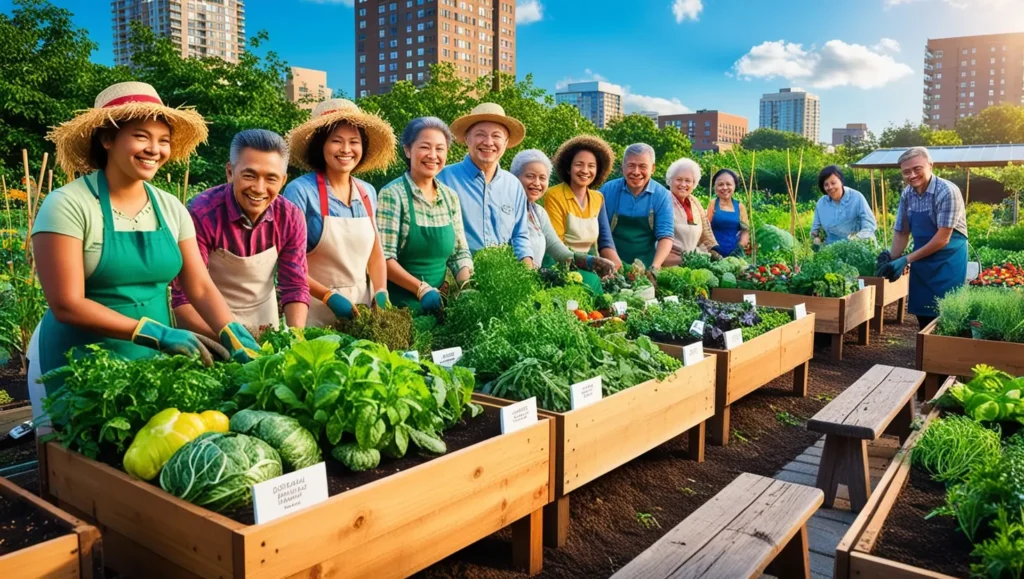
Sustainable Lifestyle Guidelines
Sustainable living therefore can be defined as a way of life that is based on the responsible use of resources by individuals in society and their environment. Based on the guidelines of the sustainable lifestyle provided in this paper, you and your family may protect environment and create sustainable society.
Step-by-Step Guide to Starting Sustainable Living
1. Raise Awareness:
– What is sustainability, environmentalism, and climate change?
– Use reading materials such as books and documentaries and other resources from the internet.
2. Take Small Steps:
– Change: Begin with the basics and do not overwhelm yourself with a set of numerous changes.
– Example: The best mitigation measure would therefore be the gradual elimination of plastic use.
3. Use Natural and Local Products: Use Natural and Local Products:
– It is recommended to purchase organic food and other necessities prefer Farmers markets. This is beneficial to the locals and also aims at curbing carbon emissions from movement of goods from one place to another.
4. Utilize Renewable Energy:
– It is recommended that one should go for solar or wind energy use in the home. Where possible buy power from renewable energy companies.
5. Waste Reduction Strategies:
– An example is the application of the principles of ‘Reduce, Reuse and Recycle. ’
– A compost should also be made for food wastes and organic matter.
6. Change Transportation Habits:
– Take bicycles, public transport or else take a car with as many people as possible. This also reduces the quantity of fuel to be used and in the process helps to conserve the environment at large.
7. Incorporate Smart Home Technology:
– Smart devices; smart thermostats and energy-saving bulbs must be used in the house.
8. Engage with Local Community:
– Engage in other relevant county sustainable undertakings and crusades that call for sustainable lifestyle as a result of the established; values.
Strategies for Sustainable Living at Personal and Family Levels
1. Discuss with Family Members:
– Discuss with the family members about sustainable living and practices and their input as well as views can be taken.
2. Incorporate Organic and Healthy Eating: Incorporate Organic and Healthy Eating:
– Try to feed your family with organic and local foods as this will help in their health.
3. Education and Awareness:
– To educate the younger generation of the family to be environmentally conscious or encourage environmentally friendly practices.
4. Home Waste Management:
– Implement and initiate recycling and compost bins at your home, and presumably assign duties in those bins to every member.
5. Participate in Eco-Friendly Activities:
– Go out with your family to plant trees, clean up a river, or by purchasing organically grown foods from local markets.
6. Change Common Habits:
– Unpacking of the notion of energy efficient: The second cluster of behaviours identified by the respondents as supporting the notion of energy efficiency include:
7. Promote Alternative Transportation:
– Motivate the family members to cycle, walk or even use the public means of transport where possible.
8. Encourage Others:
– Encourage friends as well as the family members to embrace environmentally friendly habits and practices, discuss with them your experiences and good practices.
Sustainable diet guidelines are the necessity due to the fact that they are our shared responsibilities towards creating the sustainable world.
Thus performing personal and family level changes in accordance with the above-said strategies can make society more responsible towards environment.

Examples of Sustainable Development or Life As We Want It to Be
Probably nobody doubted the fact that it is possible to live sustainably because practicing sustainable living is already being implemented in the lives of millions of people on the planet. It is possible to notice many successfully implemented sustainable practices in different locations and societies across the world. Here are some of the examples and real life experience of success.
Global Examples of Sustainable Practices
1. Costa Rica:
– Ecosystem Policy: Costa Rica, for example, preserves as much as 25 percent of its land area as national parks and reserves and promote an environmental conservation tourism, which generates income for the inhabitants.
– Carbon Neutral Plan: Currently, Costa Rica is targeting to be a neutral carbon society by the year 2021 through harnessing of renewable resources and forestry.
2. Sweden:
– Urban Innovation: Stockholm has developed a sustainable transport system which mainly consist of public transport, cycling and walking.
– Zero Waste Policy: Sweden has measures put in place towards the goal of not emitting any waste in the society by the year 2030 with a target of 99% waste recycling.
3. Japan:
– Energy-Efficient Technology: In Tokyo, smart grid technology is used in energy conservation; thus, the efficient use of electricity.
– Organic Farming: Currently, most farmers in Japan are practicing how to conserve the environment and correspondent to this; they have embraced organic farming to boost their production.
4. Vietnam:
– Use of Renewable Energy: Vietnam has shown relative development in solar and wind energy sources in two-folding capacity to support the energy demand and at the same time maintain the environmental standards.
Personal Experiences and Stories of Successful Sustainable Living
1. Michelle and Her Family:
– Many people in her family, including Michelle, a mother, were able to be influenced into sustainable living. She first of all banned the use of plastic products at home and started using anything that is reusable.
They began buying organic food from farmer’s market and began to cultivate vegetables in their backyard which in turn enhanced their living standards and contributed to the environmental protection.
2. Jake’s Story:
– Cycling thus became popular as a means of transport among people such as Jake who is a young man. He operates in his own locality and he uses a bicycle to commute to work hence avoiding expenditures on fuel. He posts his experiences on the social media to propagate use of bicycles.
3. Sarah’s Initiative:
– Struggling teacher Sarah has developed the organic food production farm at her school in which children cultivate vegetables. It provides lessons on environment and sustainable agriculture to the students and at the same time produces organic vegetables to use in schools’ cafeteria.
4. Kevin’s Work:
– Kevin an entrepreneur created a company that has the specialty of manufacturing and selling reusable products in a bid to reduce the use of plastics. His initiative helps the local community in practicing sustainable living standards and also assist in preventing plastic pollution.
It is worth noting that, there are good practices that have been implemented in different places around the world by different individuals for sustainable living.
These examples show that it is possible to change a lot in one’s life and the surroundings if only to raise awareness and start fitting and participating in necessary actions.
Such success stories make one to shift their perception hence embracing that sustainable living is achievable and can be a pointer to the future.
What is sustainable living?
Sustainable living refers to a lifestyle that seeks to reduce an individual’s or society’s use of the Earth’s natural resources. It involves making conscious decisions to minimize waste, conserve energy, use renewable resources, and support eco-friendly practices to lessen the environmental impact.
Why is sustainable living important?
Sustainable living is important because it helps preserve the planet’s resources for future generations, reduces pollution and environmental degradation, and promotes healthier lifestyles. It addresses climate change, conserves biodiversity, and contributes to social and economic well-being.
How can I practice sustainable living in my daily life?
You can practice sustainable living by reducing waste, recycling, using energy-efficient appliances, conserving water, adopting renewable energy sources like solar power, buying local and organic products, and using eco-friendly transportation methods like cycling or public transport.
What are some common misconceptions about sustainable living?
A common misconception is that sustainable living is expensive or inconvenient. In reality, many sustainable practices, such as reducing waste or conserving energy, can save money in the long run. Another misconception is that small changes don’t matter, but collective small actions can lead to significant environmental impact.
How does sustainable living benefit society?
Sustainable living benefits society by promoting cleaner air and water, reducing pollution, conserving natural resources, supporting local economies, and fostering a healthier environment for communities. It also encourages equitable resource distribution and sustainable economic growth.
Conclusion
Sustainable living is not only an approach to preserving the environment but also a pathway to enhancing quality of life for individuals and communities. By adopting practices that reduce waste, conserve energy, and use eco-friendly products, we can help protect the Earth’s ecosystems and ensure the well-being of future generations. Sustainable living fosters responsibility, health, and resilience in both personal and global contexts, making it essential for a balanced and thriving future.

